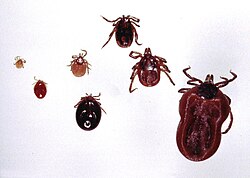Journal.pbio.3001783.g001
Autor:
Cristina Kroon, Larissa Breuer, Lydia Jones, Jeehye An, Ayça Akan, Elkhansa Ahmed Mohamed Ali, Felix Busch, Marinus Fislage, Biswajit Ghosh, Max Hellrigel-Holderbaum, Vartan Kazezian, Alina Koppold, Cesar Alberto Moreira Restrepo, Nico Riedel, Lea Scherschinski, Fernando Raúl Urrutia Gonzalez, Tracey L. Weissgerber
Přisuzování:
Obrázek je označen jako „Vyžadováno uvedení zdroje“ (Attribution Required), ale nebyly uvedeny žádné informace o přiřazení. Při použití šablony MediaWiki pro licence CC-BY byl pravděpodobně parametr atribuce vynechán. Autoři zde mohou najít příklad pro správné použití šablon.
Shortlink:
Zdroj:
Formát:
1500 x 1499 Pixel (571284 Bytes)
Popis:
Western blotting is a standard laboratory method that uses antibodies to detect target proteins in a sample. (1) The sample, typically a mixture of proteins, is loaded on the gel. A molecular weight (MW) marker, which contains prelabeled proteins of varied, known molecular weights, is loaded on the gel alongside the protein sample as a size reference. (2) Gel electrophoresis is used to separate proteins based on their molecular weight. (3) The proteins are transferred, or “blotted”, onto a membrane. (4) The membrane is blocked to reduce nonspecific binding and then sequentially probed with a primary antibody that specifically binds to the protein of interest and a secondary antibody. The latter binds the primary antibody and carries an enzyme or a fluorophore that allows subsequent detection. (5) The signal is detected through a chemiluminescent reaction or fluorescence, respectively. (6) An image of the western blot is prepared for publication: Annotations are added and often the blot is cropped.
Licence:
Credit:
Kroon C, Breuer L, Jones L, An J, Akan A, Mohamed Ali EA, et al. (2022) Blind spots on western blots: Assessment of common problems in western blot figures and methods reporting with recommendations to improve them. PLoS Biol 20(9): e3001783. https://doi.org/10.1371/journal.pbio.3001783
Relevantní obrázky
Relevantní články
Lymeská nemocLymeská nemoc, též lymská borrelióza, lymská borelióza, lymeská borrelióza je bakteriální infekce působená šesti druhy gramnegativní bakterie z čeledi Borreliaceae. Multiorgánové infekční onemocnění je nejčastěji způsobené jedním ze tří patogenních druhů spirochéty komplexu Borrelia burgdorferi sensu lato. Bakterie Borrelia se na člověka přenáší sáním klíště rodu Ixodes, které je bakterií infikováno. V České republice je lymská borrelióza nejčastější infekcí přenášenou klíšťaty, převážně klíštětem obecným. .. pokračovat ve čtení












